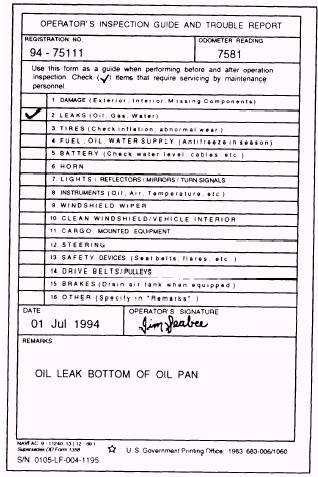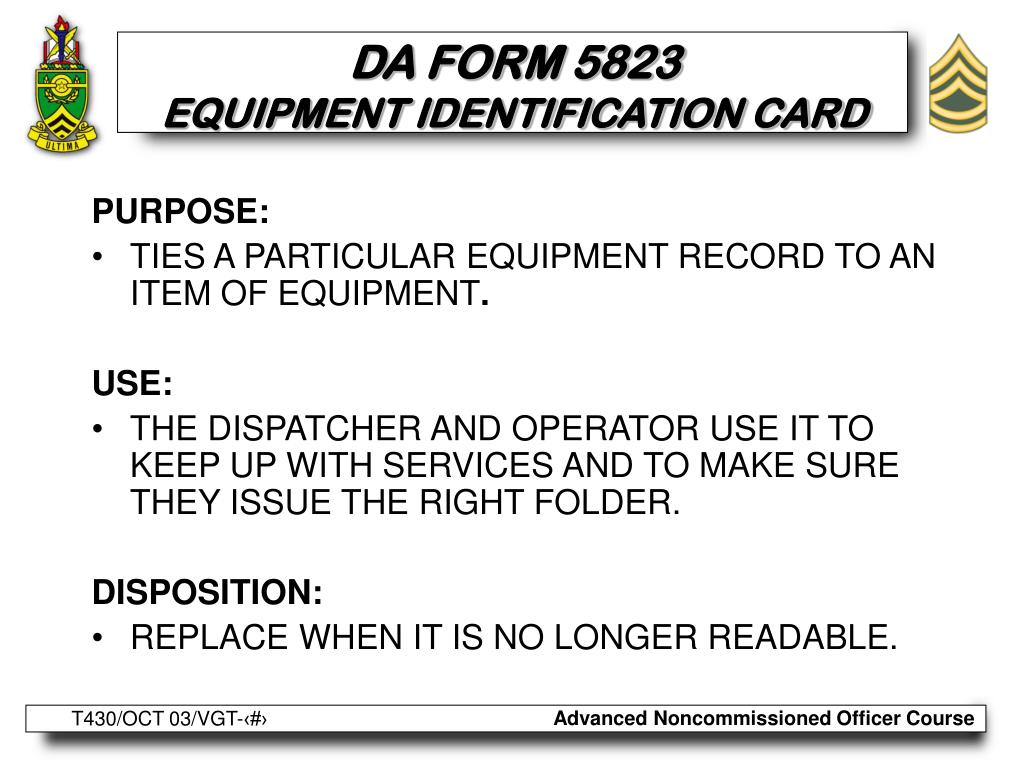

It is the smallest organized subgroup of the convoy and usually will not exceed 20 vehicles.įigure 5-1. It comes under the direct control of the march unit commander.

Da form 1970 manual dispatch serial#
A serial may be divided into two or more march units. The serial commander is directly responsible to the convoy commander. All the elements move to the same area and are grouped under a serial commander. It consists of elements of a march column (convoy) moving from one area over the same route at the same time. A serial is a subdivision of the march column.It represents approximately a battalion-to-brigade size element. A march column is a group of two to five serials.The three organizational elements of a convoy are a march column, a serial, and a march unit (see Figure 5-1). Whenever possible, convoys are organized along organizational lines, such as platoon, company, and battalion. A convoy commander can better control a convoy if it is broken into smaller, more manageable groups.

The organization of a convoy consists of the following: ORGANIZATIONAL ELEMENTSĥ-2. The POCs for coordinating movement are given in the MTMCTEA's Directory of Highway Permit Officials and MOBCON Coordinators. However, all requests should later be confirmed in writing. These moves may be made without prior written permits from civil authorities. Convoys and oversize/overweight moves must be coordinated with civil authorities to ensure that the selected routes are passable. During emergencies, permit requests may be made by the most expeditious means of communication available. Special provisions apply during a national defense emergency and for certain other critical defense moves. Loads that exceed maximum allowable weight or dimensions will be transported by other modes or commercial transporters that conform with the limits of each state. DOD policy states that no vehicle movement that exceeds legal limitations or regulations, or that subjects highway users to unusual hazards, will be made without permission from state, local, and/or toll authorities. Civil highway authorities set limits on vehicle weight, length, width, and height to ensure the safety of the highway user and to preclude damage to the infrastructure. Joint Service regulations AR 55-29, AR 55-162, and AR 55-80 provide guidance on oversize/overweight vehicles and convoy moves. Chapter 5 Convoy Operations Convoy operations are planned according to FM 55-30 and FM 55-312.


 0 kommentar(er)
0 kommentar(er)
